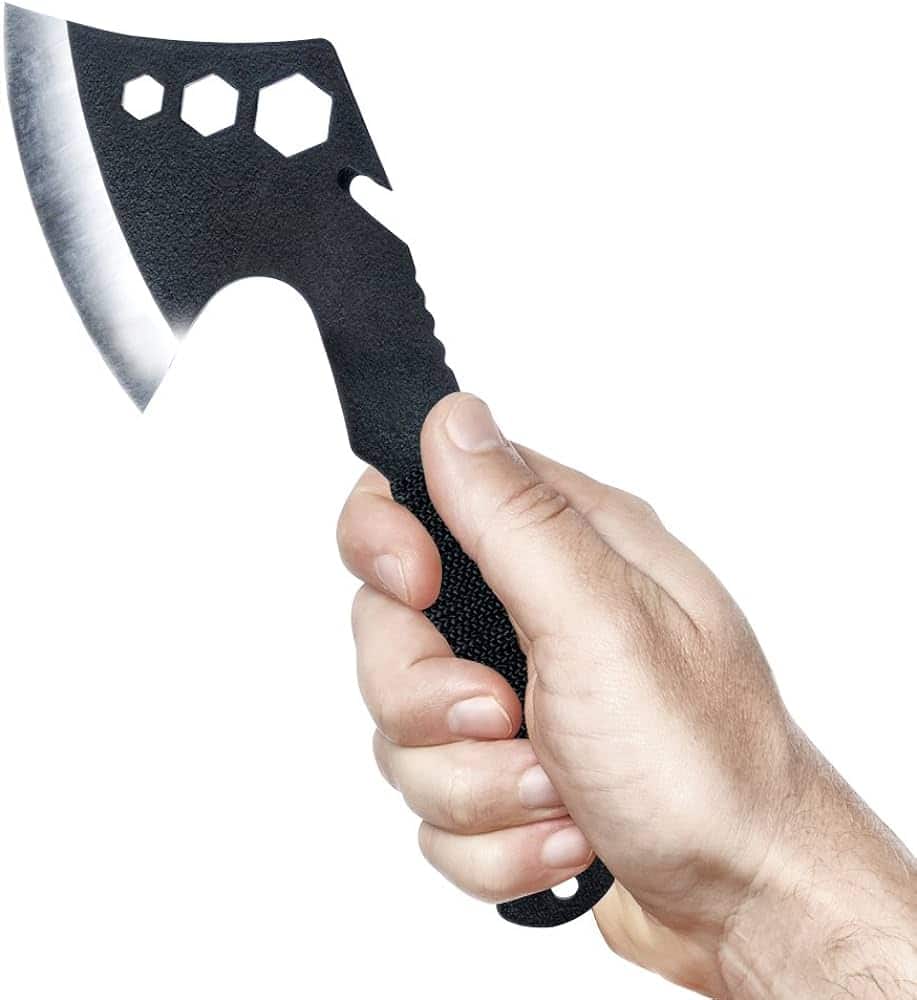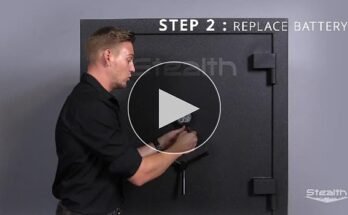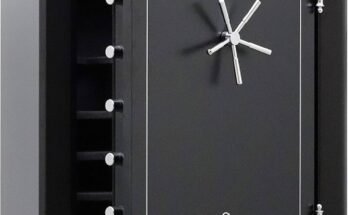The Fort Knox PB1 Handgun Safe is widely regarded as one of the safest handgun safes available. Its solid steel construction and high-security locking mechanism provide unparalleled protection.
Safety is a paramount concern for gun owners, and choosing the right handgun safe is crucial to ensure both security and quick access. The Fort Knox PB1 stands out with its robust build quality, featuring a thick 10-gauge steel body and a massive 3/16-inch tamper-resistant wraparound door.
This safe offers a reliable simplex mechanical lock that doesn’t rely on batteries or electronics, thereby minimizing the risk of lock failure. Its heavy-duty build is designed to thwart unauthorized access and protect against potential theft, making it an ideal solution for those seeking a resilient and reliable gun storage option. Trustworthy and dependable, the PB1 provides peace of mind for responsible firearm owners who prioritize the security of their handguns.

Credit: www.amazon.com
Choosing The Right Handgun Safe
Choosing the Right Handgun Safe is crucial for securing your firearms while ensuring quick access in emergencies. An ideal safe balances robust security features and ease of use. Factors like size, material, and lock type play pivotal roles in the decision-making process.
Size And Storage Capacity
A handgun safe should match your storage needs. Consider the number of guns you need to secure.
- Single Handgun Safes: Compact, designed for quick access.
- Multiple Handgun Safes: Larger, with varied compartments.
Measure your space to ensure the safe fits comfortably.
| Safe Type | Dimensions (inches) | Capacity |
|---|---|---|
| Single Handgun | 12x10x4 | 1 Handgun |
| Multiple Handguns | 18x14x10 | 2-4 Handguns |
Construction Materials
Strong materials stop thieves and protect against fire.
- Steel: Common, durable, offers protection.
- Thick Gauge Steel: Better resistance to break-ins.
Check for pry-resistant features and reinforced doors.
Choose safes with fire rating for added safety.
Biometric Vs. Traditional Locks
Choosing the right handgun safe is crucial for the safety of you and your family. There are two main types of locks: biometric and traditional. Understanding these options is the first step toward making an informed decision.
Convenience And Speed
Biometric safes offer quick access. They use fingerprint technology.
Traditional safes need a key or combination. Remembering a code takes time.
Forgot your key or combination? This can slow you down. A biometric scanner only needs your fingerprint.
Reliability In Emergencies
In an emergency, every second counts. Biometric safes are designed for such situations. They give swift access to your firearm. No fumbling with keys or recalling combinations is needed.
Traditional safes may not open if not maintained well. Rusty locks or forgotten combinations can fail you when you need them most.
| Lock Type | Access Speed | Emergency Reliability |
|---|---|---|
| Biometric | Fast | High |
| Traditional | Varies | Moderate to Low |
A biometric safe can often work even in the dark. Traditional safes could require light to input a combination.
Certifications And Standards
When choosing the safest handgun safe, certifications and standards are key. These marks of quality show that a safe has undergone rigorous testing. Thus, meeting specific safety and security criteria. Below, we detail some pivotal certifications every buyer should look for.
Ul Rating
The Underwriters Laboratories (UL) rating is a trusted benchmark for safe security and durability. A UL rated safe has been tested against harsh conditions. This includes resistance to heat and break-in attempts. Look for this rating to ensure that your firearm receives the highest level of protection possible.
- UL 687 – Test for burglary-resistant safes
- UL 758 – Standard for safety of electronic components
- UL 1037 – Anti-theft devices and systems testing
California Doj Approval
To legally store a firearm in California, your safe must have the California Department of Justice (DOJ) approval. This approval ensures the safe meets specific construction and design standards. Including:
| Standard | Description |
|---|---|
| Locking Mechanism | Must be secure and tamper-proof |
| Wall Thickness | No less than 12-gauge steel |
| Locking Bolts | Minimum of three locking bolts |
Only safes that pass stringent tests receive the California DOJ approval seal. By picking a safe with this certification, you guarantee compliance with strict standards for firearm safety storage.
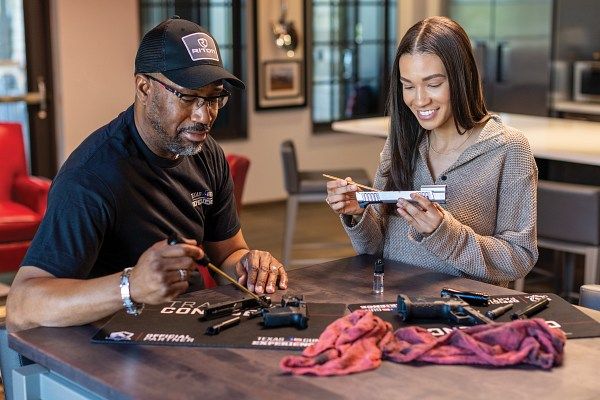
Credit: allevents.in
Advanced Security Features
The Advanced Security Features of a handgun safe are critical to keeping your firearms secure and out of the wrong hands. Modern safes come equipped with innovative features designed to deter and prevent unauthorized access. Below, we explore some of these revolutionary security measures.
Anti-tamper Mechanisms
Safety and resilience are non-negotiable when it comes to storing handguns. These features make it tough for intruders:
- Reinforced Locking Bolts: Prevents forced entry.
- Biometric Scanners: Allows access only to registered fingerprints.
- Multiple Locking Points: Makes prying open the safe much harder.
Alarm Systems
Modern handgun safes come with alarm systems that alert owners of unauthorized attempts. Here’s what these alarms do:
| Alarm Feature | Function |
|---|---|
| Audible Alarms | Emits loud sounds when incorrect access is detected. |
| Silent Alarms | Sends discreet alerts to a predefined device or system. |
| Tamper Indicators | Provides visual evidence of any forced entry attempts. |
Installation And Placement
Ensuring the safety of your firearm requires not just buying a top-quality handgun safe, but also thinking carefully about where and how you install it. The right placement can make all the difference in emergencies, while proper anchoring secures it against theft or unauthorized use.
Best Locations For Access
Choosing the ultimate spot for your safe involves balancing accessibility with security. Consider these key areas:
- Bedroom: A common choice, offering quick access during nighttime emergencies.
- Home Office: Ideal if you spend a lot of time working from home.
- Closet: Tucked away, yet within easy reach when needed.
- Near Entry Points: Enables you to arm yourself quickly if you detect an intruder.
Anchoring Your Safe
Anchoring your safe adds an extra layer of security. Follow these tips:
- Pick a solid surface, such as concrete or a sturdy wall.
- Use heavy-duty bolts designed for your safe’s material.
- Ensure the safe is level to avoid door misalignment.
- Hide anchoring points under carpets or within the safe’s interior to prevent tampering.
| Tools Needed | Step by Step |
|---|---|
| Drill | Measure and mark drill points on the surface. |
| Bolts & Anchors | Drill holes and insert anchors for the bolts. |
| Wrench | Tighten bolts securely to anchor the safe. |
Securing your handgun safe strategically ensures its contents remain safeguarded yet accessible. Review your daily routine, the layout of your home, and potential threats to choose the most effective installation spot. Anchoring is a must — a free-standing safe can become a target. Invest time in setting it up correctly, and you’ll gain peace of mind from knowing your firearm is both secure and reachable when you need it the most.
Maintaining Your Safe
Keeping your handgun safe in top condition is essential for security and longevity. Regular check-ups and upkeep will ensure it functions properly every time you need it. Think of your safe as a trusty sidekick; it needs care to perform at its best. Without further ado, let’s explore how to maintain your safe effectively.
Regular Maintenance Tips
Consistent maintenance avoids unexpected failures and guarantees your safe’s reliability. Follow these straightforward steps to keep your safe in perfect shape:
- Check the batteries in electronic locks every six months. Replace them if necessary.
- Wipe the exterior with a damp cloth to remove dust and debris. Dry it immediately to prevent rust.
- Oil the hinges and locks yearly. Use a silicone-based lubricant for smooth operation.
- Inspect the interior for moisture. Use desiccants to keep it dry and protect your handgun.
- Ensure the bolts and screws are tight. Adjust them if you find any looseness.
Understanding Wear And Tear
All things age, including your handgun safe. Recognizing signs of wear and tear can save you from potential breaches. Look for these indicators:
| Component | Signs of Wear |
|---|---|
| Lock Mechanism | Sticking or failure to lock properly |
| Hinges | Creaking sounds or resistance when opening |
| Seal | Cracks or gaps in safe door seal |
Avoid ignoring these issues. Address them promptly to safeguard your firearm. Simple wear and tear can lead to bigger problems if left unchecked. Practice regular inspections and immediate action when required.
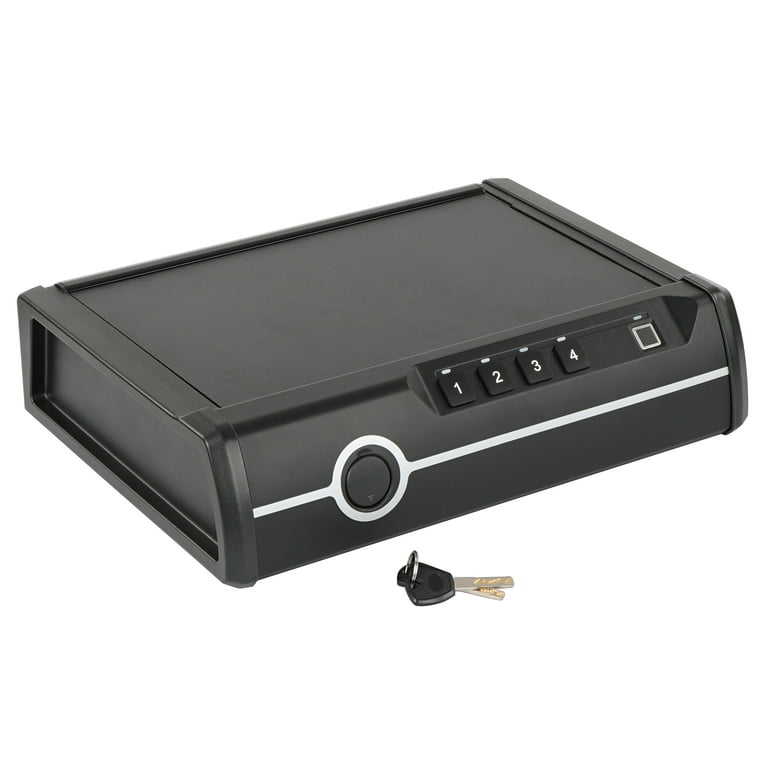
Credit: www.walmart.com
Frequently Asked Questions On Safest Handgun Safe
What Is The Most Safe Handgun?
The term “most safe handgun” is subjective, as safety depends on the user, training, and the firearm’s features. Modern handguns with safety mechanisms like grip or trigger safeties, such as those from reputable brands like Sig Sauer or Glock, are generally considered reliable and safe when used properly.
What Is The Very Best Gun Safe?
The best gun safe varies by need, but Steelwater Gun Safes often top lists for their robust security and fire protection features.
What Is The Best Handgun To Carry For Safety?
The best handgun for safety varies by individual needs, but common options include the Glock 19 for its reliability and ease of use.
What Is The Safest Gun Lock?
The safest gun lock depends on individual needs, but biometric locks are highly secure due to personalized access.
Conclusion
Securing your firearm is critical for safety and peace of mind. A robust handgun safe offers that security. After exploring options, it’s clear that the right choice balances accessibility, durability, and smart features. Remember, investing in a reliable safe protects not only your gun but also your loved ones.
Choose wisely for ultimate protection.
